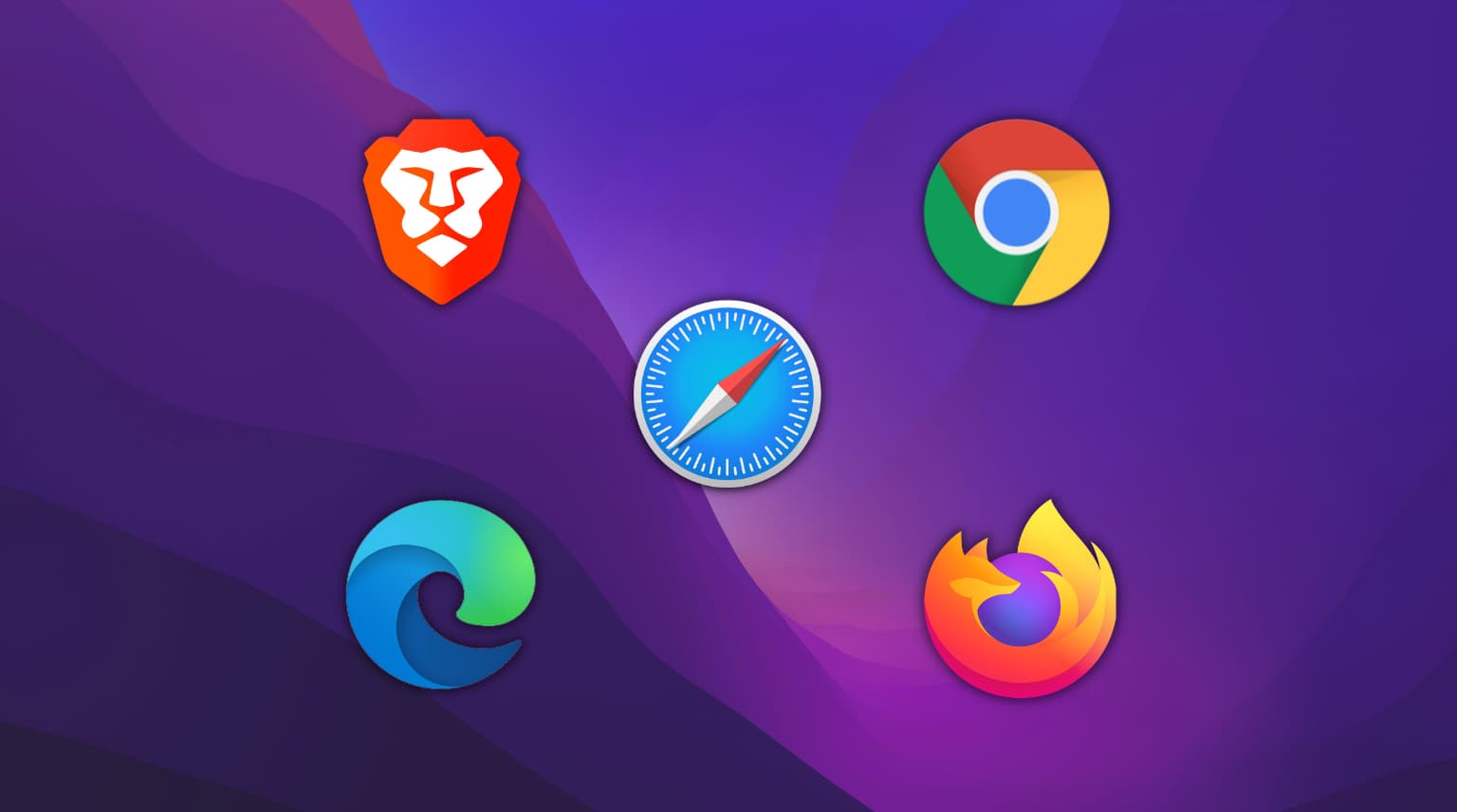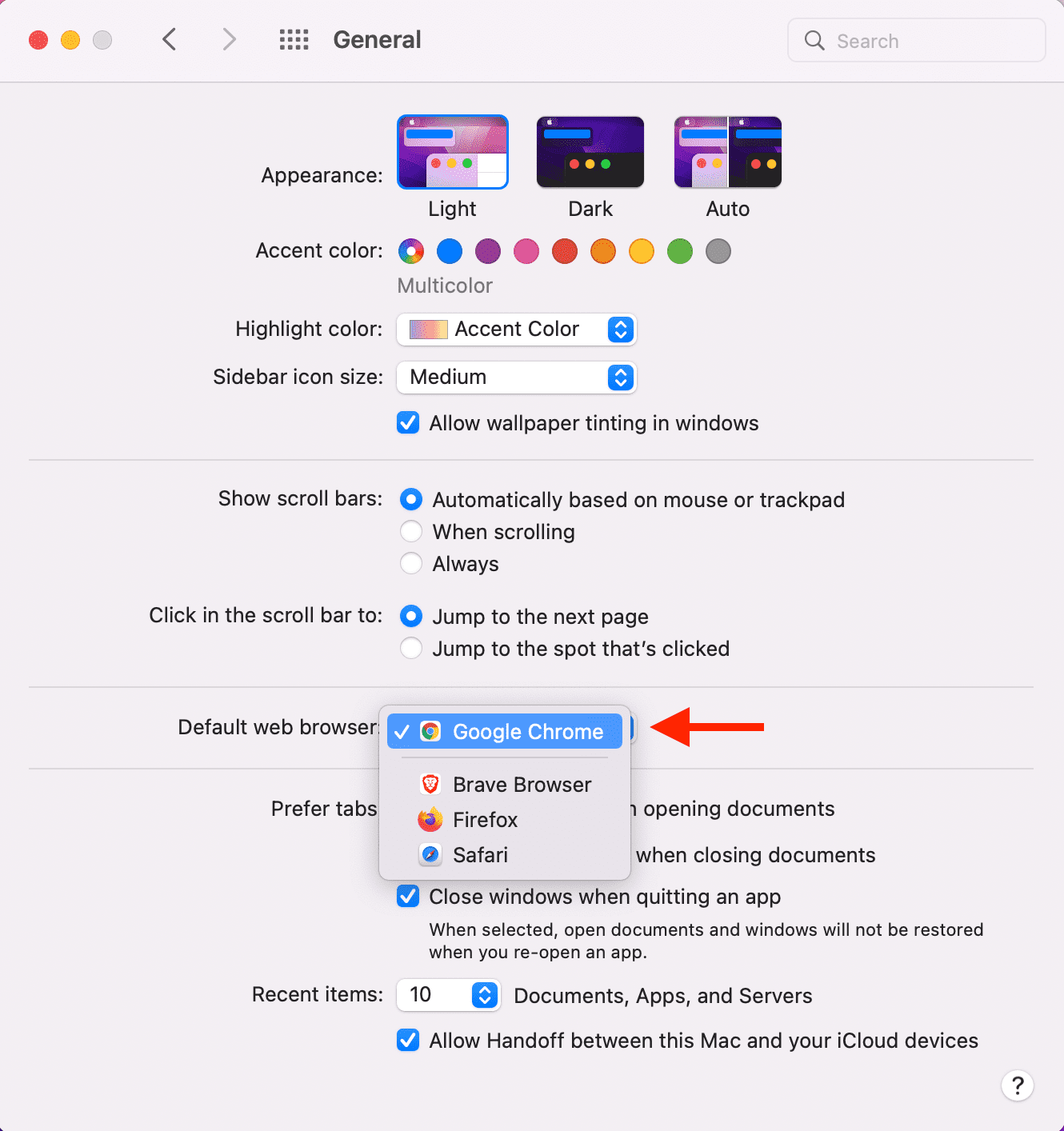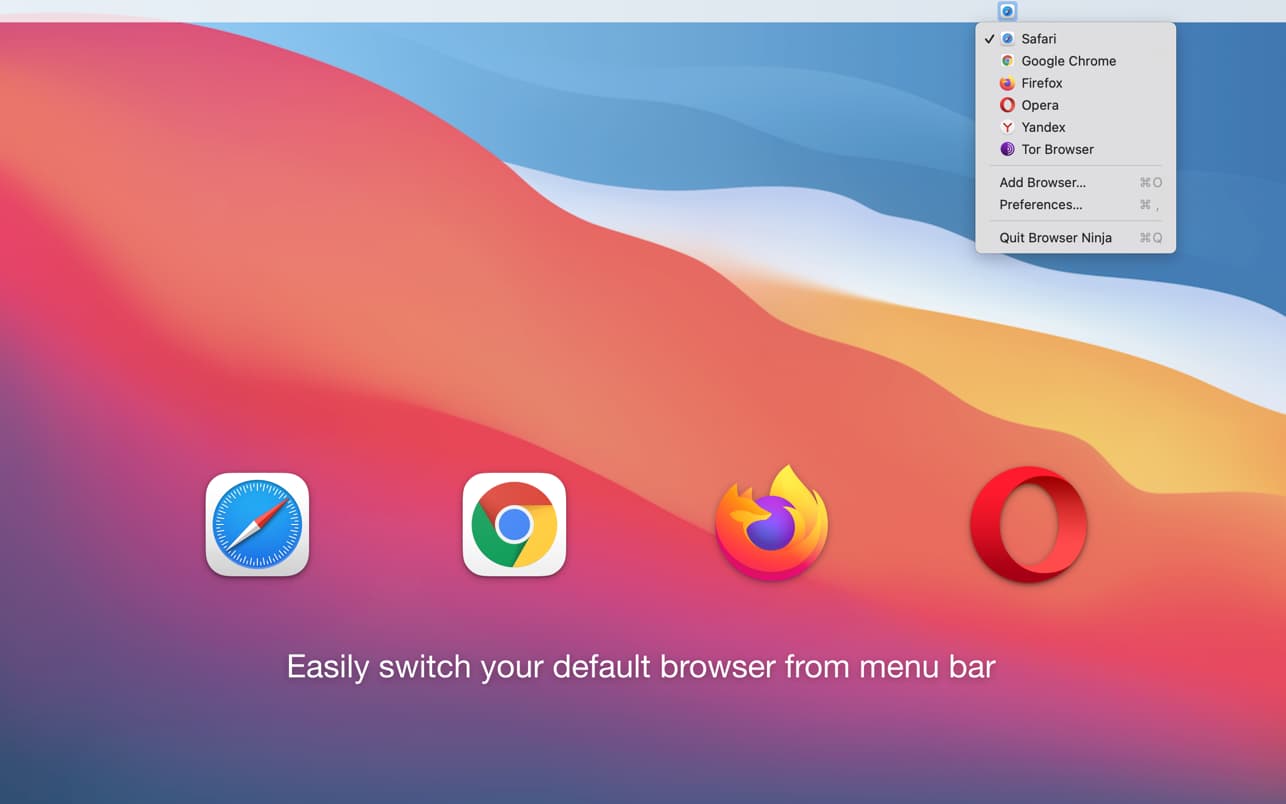Check out the quick steps to set Chrome, Firefox, Edge, Brave, Opera, or some other browser as your default web browser on Mac.

Web links you click in other apps will open in your computer’s default browser. For instance, if you click a link in Mac’s Mail or Messages app, it will open in the default browser.
The main reason for switching default browsers is user preference. If you’re coming to macOS from Windows or Linux, you may be accustomed to Edge, Chrome, or Firefox. Your history, bookmarks, username & password, etc., may be saved there. Thus, setting that web browser of choice as your default on Mac makes sense.
Furthermore, when you try to log in to apps like Slack or Messenger on your Mac, they will always open the sign-in page in the default web browser. On my Mac, Chrome is the default browser. However, I keep my login details saved in the Apple Passwords app, which is available easily in Safari. So, while logging in to these apps, I briefly change the default browser so that the login page opens in Safari instead of Chrome.
Out of the box, Apple’s Safari is the default browser on Mac, iPhone, and iPad. But it’s easy to set something else as the default browser on your iPhone and iPad as well as your Mac.
3 ways to change your default web browser on Mac
Before you get to the steps, make sure you have downloaded and installed Chrome, Firefox, Edge, Brave, Opera, or another browser of your choice.
1. From Mac’s Settings
- Open the System Settings app on your Mac.
- Click Desktop & Dock.
- Click the drop-down menu next to Default web browser and select Chrome, Firefox, Edge, Brave, etc.

If you’re on an older version of macOS, open System Preferences and go to General settings. Now, click the dropdown menu next to Default web browser and select a browser from the list.

2. Use in-browser settings
When you install and open a new browser for the first time, it will certainly show you an alert to be your default browser. You can use this to set that browser as the default on your Mac. The same setting is also inside the browser settings, which you can access later by launching that browser and pressing the Command + comma (,) keys.

3. Using a third-party app
Finally, if you have to switch your default web browsers multiple times per day, you can use third-party apps like Browser Ninja. Such apps sit in your Mac’s menu bar and let you change default browsers from there in a couple of clicks.

Unable to set a browser as default on Mac?
Do the following if a browser does not show in the list of possible default browsers in System Settings (step 3 above):
- Make sure the app is installed on your Mac, and you can see it in the Launchpad and Finder Applications folder.
- Press Command + Option + esc and Force Quit System Settings or System Preferences. After that, follow the steps to change the default browser again.
- Click the Apple icon and restart your Mac. Now retry, and you should see the browser as a list of potential default options in System Settings.
- Delete the app and reinstall it.
- If everything fails, get in touch with the developer of that browser app.
On a related note: